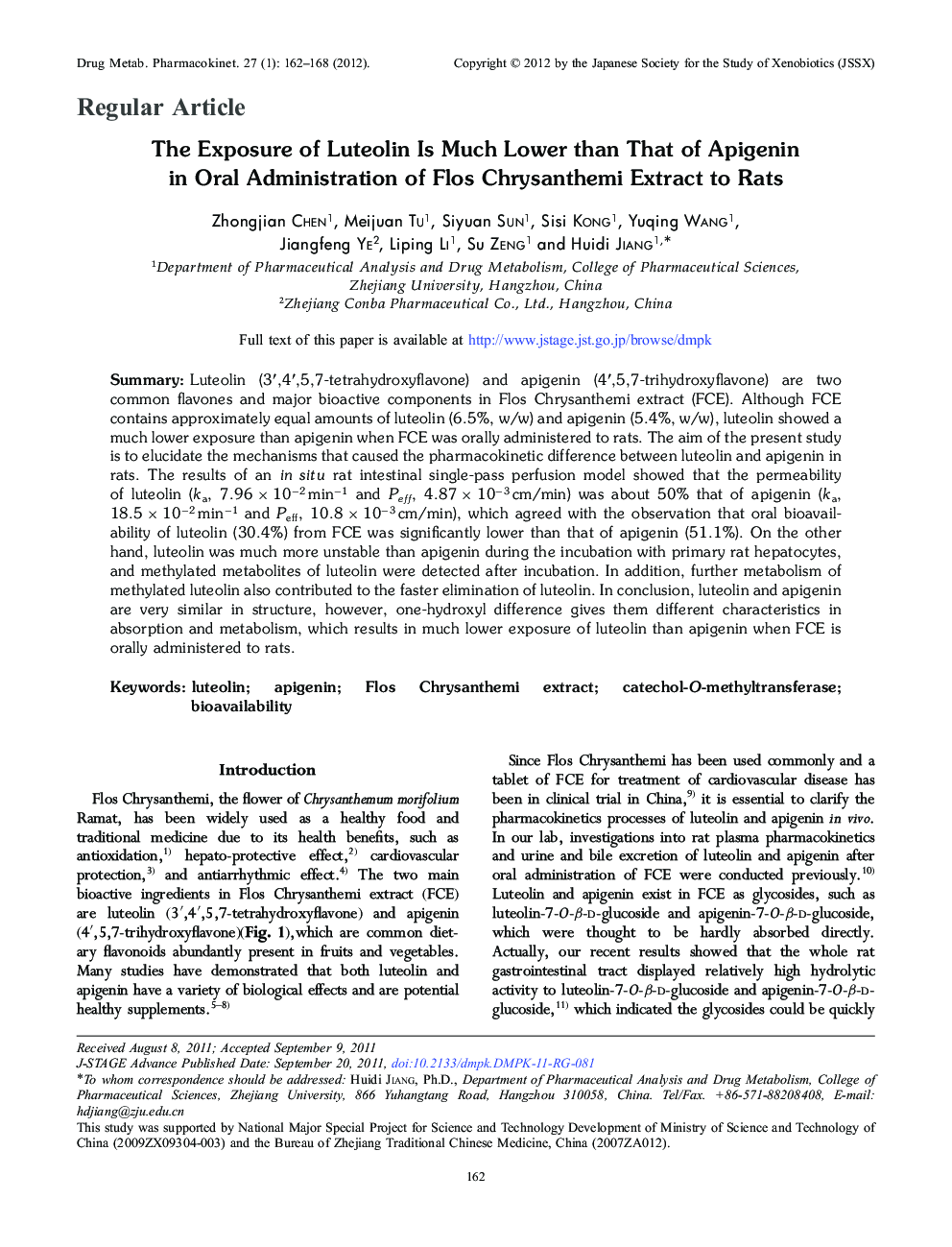| کد مقاله | کد نشریه | سال انتشار | مقاله انگلیسی | نسخه تمام متن |
|---|---|---|---|---|
| 2479209 | 1113430 | 2012 | 7 صفحه PDF | دانلود رایگان |

Summary:Luteolin (3',4',5,7-tetrahydroxyflavone) and apigenin (4',5,7-trihydroxyflavone) are two common flavones and major bioactive components in Flos Chrysanthemi extract (FCE). Although FCE contains approximately equal amounts of luteolin (6.5%, w/w) and apigenin (5.4%, w/w), luteolin showed a much lower exposure than apigenin when FCE was orally administered to rats. The aim of the present study is to elucidate the mechanisms that caused the pharmacokinetic difference between luteolin and apigenin in rats. The results of an in situ rat intestinal single-pass perfusion model showed that the permeability of luteolin (ka, 7.96 × 10- 2 min- 1 and Peff, 4.87 × 10- 3 cm/min) was about 50% that of apigenin (ka, 18.5 × 10- 2 min- 1 and Peff, 10.8 × 10- 3 cm/min), which agreed with the observation that oral bioavailability of luteolin (30.4%) from FCE was significantly lower than that of apigenin (51.1%). On the other hand, luteolin was much more unstable than apigenin during the incubation with primary rat hepatocytes, and methylated metabolites of luteolin were detected after incubation. In addition, further metabolism of methylated luteolin also contributed to the faster elimination of luteolin. In conclusion, luteolin and apigenin are very similar in structure, however, one-hydroxyl difference gives them different characteristics in absorption and metabolism, which results in much lower exposure of luteolin than apigenin when FCE is orally administered to rats.
Journal: Drug Metabolism and Pharmacokinetics - Volume 27, Issue 1, 2012, Pages 162-168